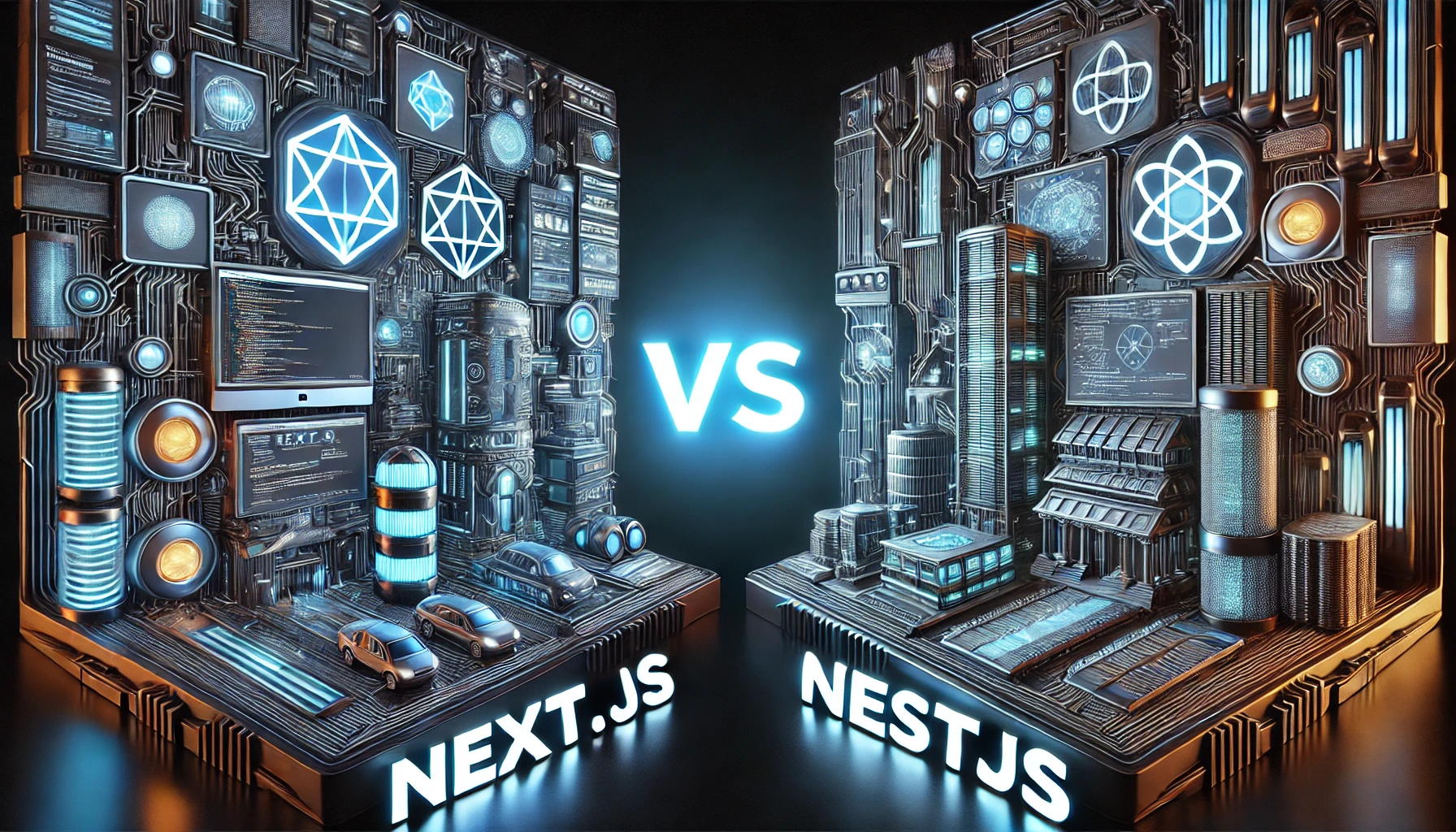When it comes to modern web development, choosing the right framework can significantly impact your project’s performance, scalability, and maintainability. Two of the most powerful frameworks in the JavaScript ecosystem are Next.js and NestJS. Though their names sound similar, they serve different purposes.
In this guide, we will explore Next.js vs NestJS, their key differences, use cases, advantages, disadvantages, and which one is best for your project. If you’re a developer, startup founder, or business owner, this comparison will help you make an informed decision.
What is Next.js?
Next.js is a React framework that enables server-side rendering (SSR), static site generation (SSG), and client-side rendering (CSR) with ease. It is developed by Vercel and is widely used for building SEO-friendly, high-performance web applications.
Key Features of Next.js
- Server-Side Rendering (SSR): Improves SEO and initial page load speed.
- Static Site Generation (SSG): Generates pre-rendered pages for better performance.
- Client-Side Rendering (CSR): Supports dynamic and interactive content.
- API Routes: Allows building backend APIs within the same project.
- Image Optimization: Enhances loading speed with automatic image compression.
- Middleware Support: Enables efficient request handling.
- Automatic Code Splitting: Loads only the required JavaScript, reducing load time.
Use Cases of Next.js
- SEO-Optimized Websites (e.g., blogs, news portals)
- E-commerce Platforms (Amazon-like stores)
- Marketing Websites
- Web Applications with Dynamic Content
- SaaS Applications with a frontend focus
What is NestJS?
NestJS is a backend framework for building scalable, maintainable, and modular server-side applications using TypeScript. It is inspired by Angular and leverages Express.js (or optionally Fastify) under the hood.
Key Features of NestJS
- Modular Architecture: Encourages structured, maintainable code.
- TypeScript Support: Enhances code quality and development experience.
- Dependency Injection: Makes code reusable and testable.
- GraphQL & REST API Support: Offers flexibility for API development.
- Microservices Support: Ideal for distributed systems.
- WebSockets Support: Enables real-time applications.
- Authentication & Authorization: In-built support for security features.
Use Cases of NestJS
- Enterprise Applications
- Microservices Architecture
- RESTful & GraphQL APIs
- Real-Time Applications (e.g., chat apps, live streaming)
- Fintech & Banking Solutions
- IoT Applications
Next.js vs NestJS: Which One Should You Use?
Choose Next.js If:
✔ You need an SEO-friendly and high-performance website.
✔ You are working on an e-commerce or marketing website.
✔ You want SSR, SSG, or CSR for better user experience.
✔ You need a React-based frontend framework.
✔ You want to build a fast, scalable web application with API routes.
Choose NestJS If:
✔ You need a scalable backend for an enterprise-level application.
✔ You are working on microservices architecture.
✔ You need advanced API management (REST & GraphQL).
✔ You want built-in authentication and authorization.
✔ You prefer TypeScript and modular coding for maintainability.
Can Next.js and NestJS Work Together?
Yes! Next.js and NestJS can be used together to build a full-stack web application.
- Next.js can handle the frontend part, ensuring SEO optimization and fast page loading.
- NestJS can serve as the backend API, handling authentication, database interactions, and business logic.
This combination is perfect for applications that need both a strong frontend and a robust backend.
Pros & Cons of Next.js and NestJS
Next.js Pros
✅ Excellent SEO support
✅ Fast rendering (SSR, SSG, CSR)
✅ Built-in image optimization
✅ Easy integration with headless CMS
✅ Great for React developers
Next.js Cons
❌ Requires API development for complex backend needs
❌ Can be overkill for small static sites
❌ Not ideal for real-time applications
NestJS Pros
✅ Highly scalable and modular
✅ Strong TypeScript support
✅ Great for enterprise applications
✅ Supports both REST and GraphQL APIs
✅ Built-in security and authentication
NestJS Cons
❌ Steep learning curve for beginners
❌ Requires more setup compared to Express.js
❌ Not suitable for frontend development
Conclusion: Which One is Right for You?
- If your project focuses on frontend, SEO, and performance, go with Next.js.
- If your project needs a scalable backend with APIs and microservices, choose NestJS.
- If you want a full-stack solution, combine Next.js for the frontend and NestJS for the backend.
Both Next.js and NestJS are powerful in their own domains. Choosing the right one depends on your project’s requirements, development experience, and long-term goals.
If you’re building a modern web application that needs both a strong frontend and backend, integrating both frameworks can be the best approach!










